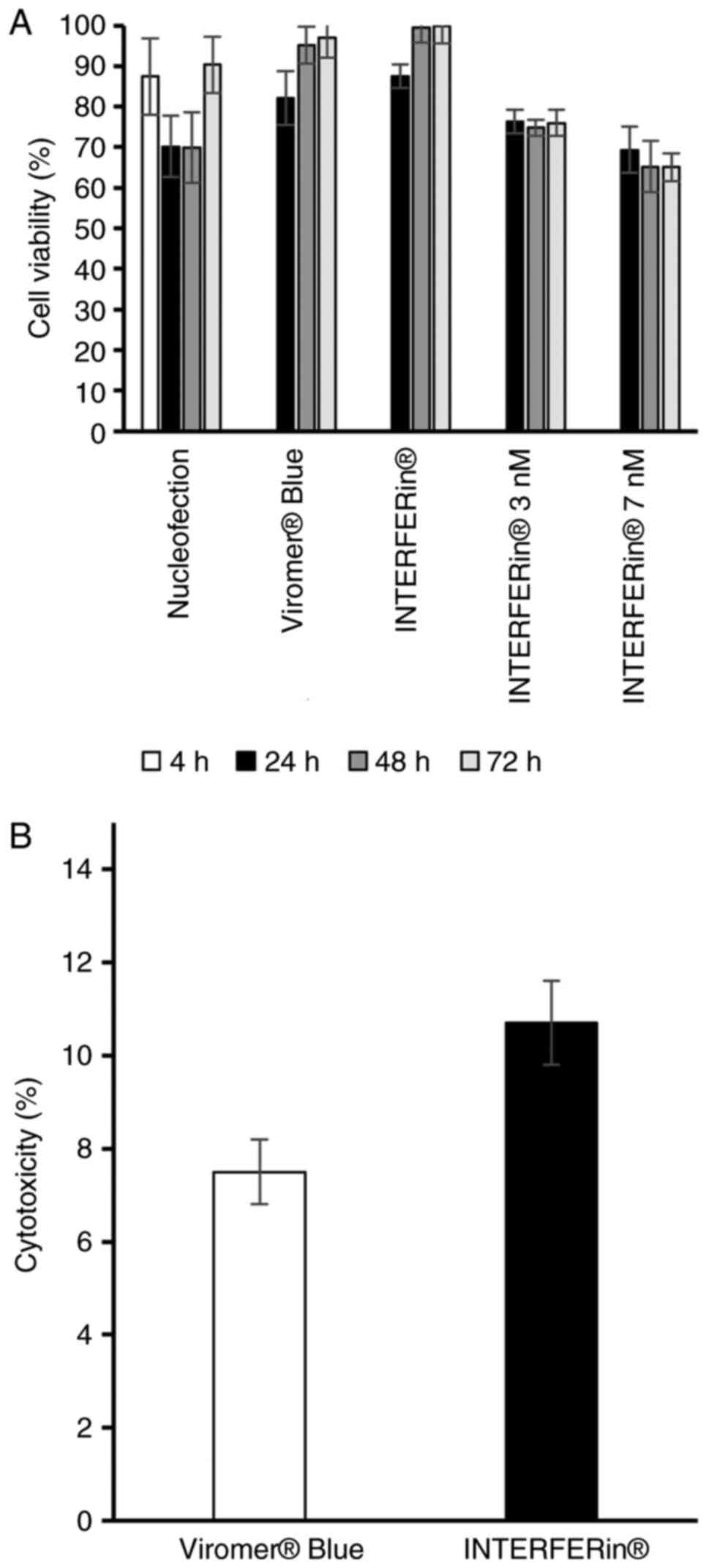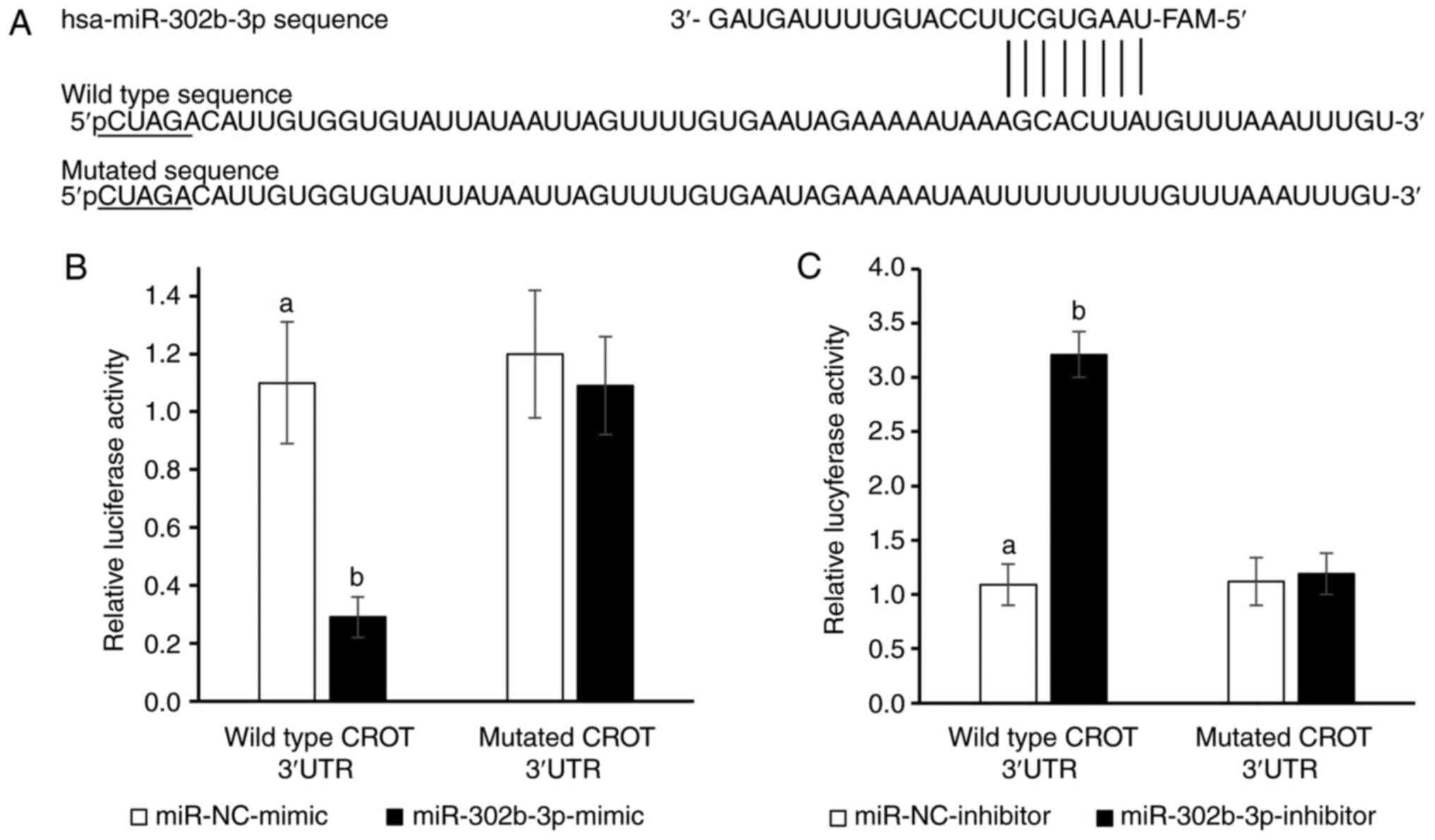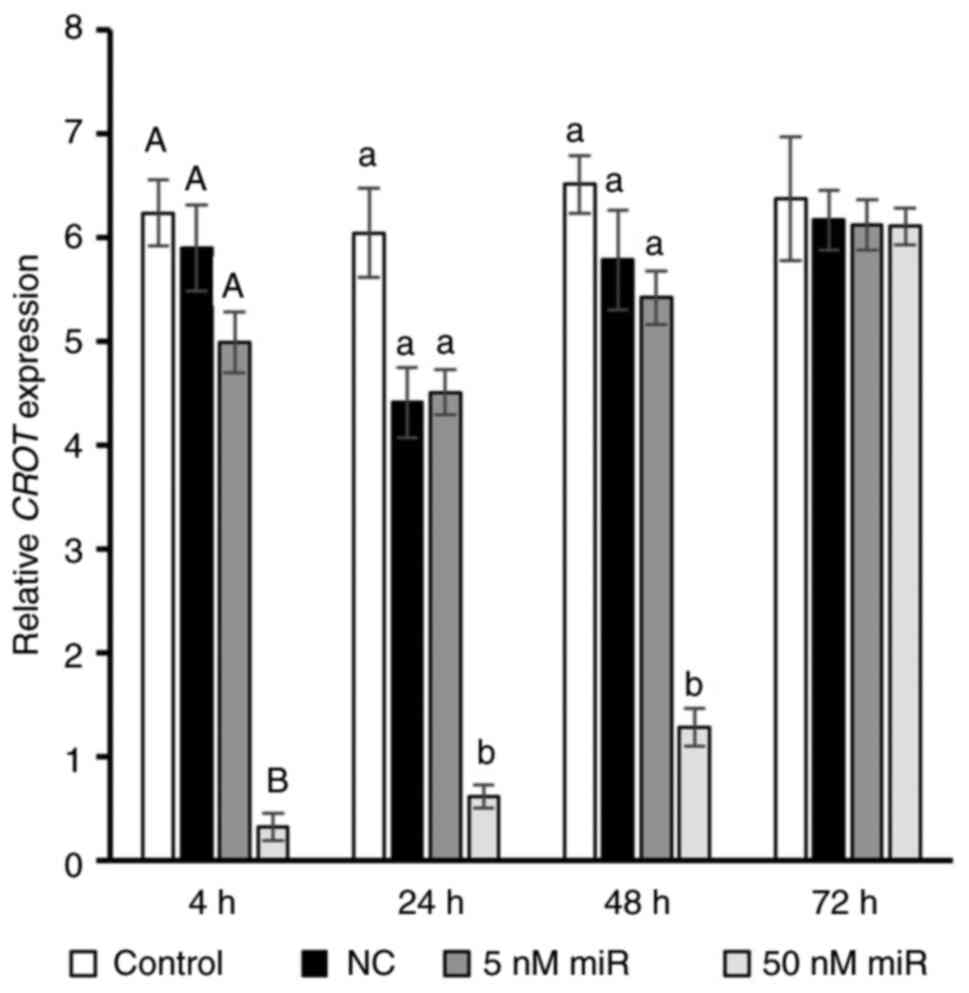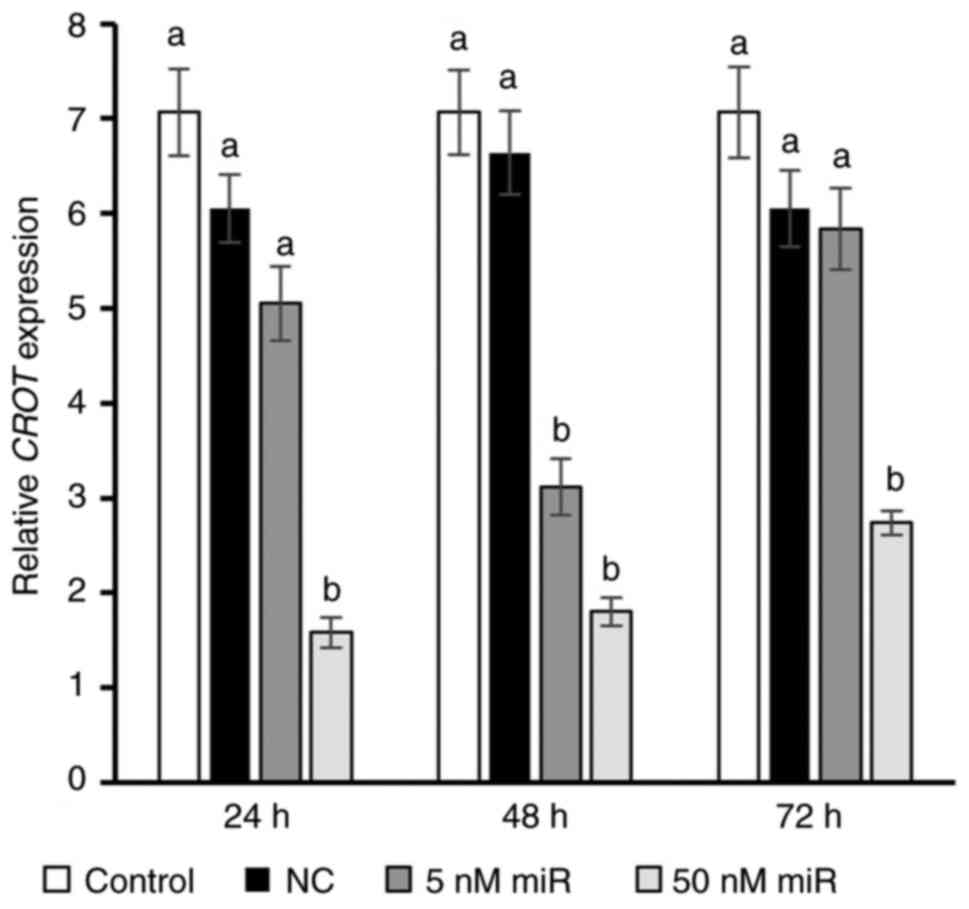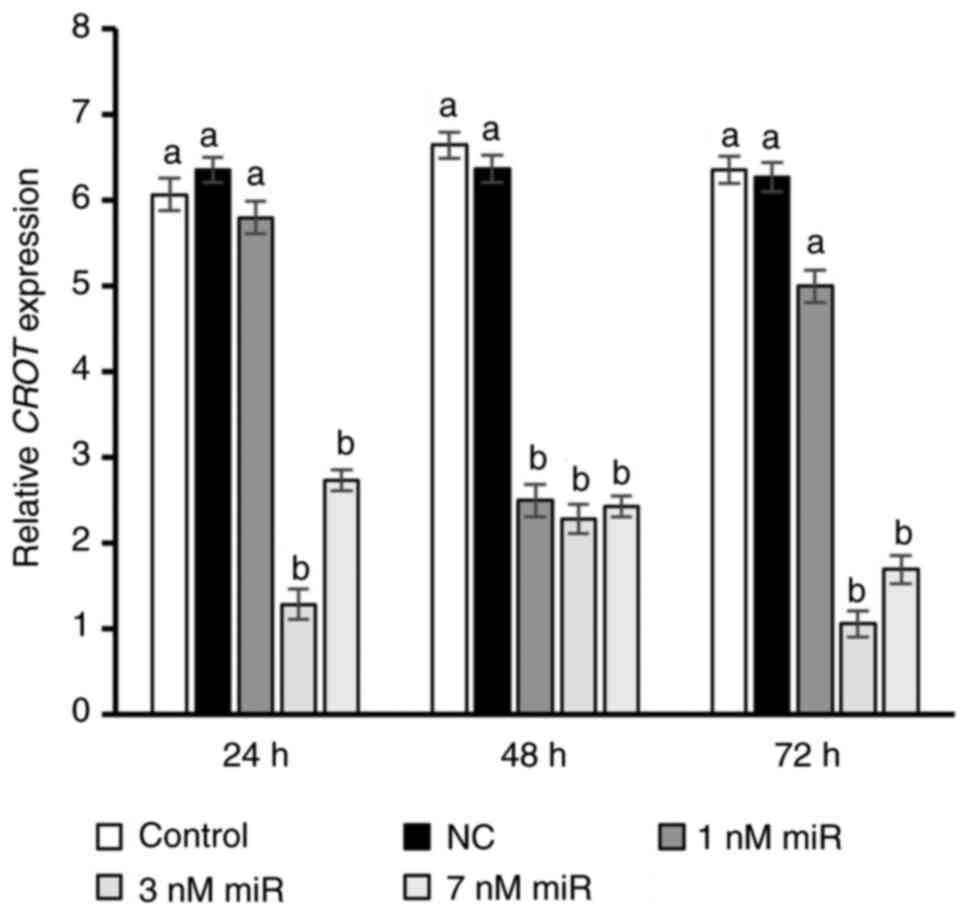|
1
|
Maier AB and Westendorp RGJ: Relation
between replicative senescence of human fibroblasts and life
history characteristics. Ageing Res Rev. 8:237–243. 2009.
View Article : Google Scholar : PubMed/NCBI
|
|
2
|
Lago JC and Puzzi MB: The effect of aging
in primary human dermal fibroblasts. PLoS One. 14:e02191652019.
View Article : Google Scholar : PubMed/NCBI
|
|
3
|
Gomes RN, Manuel F and Nascimento DS: The
bright side of fibroblasts: Molecular signature and regenerative
cues in major organs. NPJ Regen Med. 6:432021. View Article : Google Scholar : PubMed/NCBI
|
|
4
|
Raab S, Klingenstein M, Liebau S and Linta
L: A comparative view on human somatic cell sources for iPSC
generation. Stem Cells Int. 2014:7683912014. View Article : Google Scholar : PubMed/NCBI
|
|
5
|
Kim Y, Nam Y, Rim YA and Ju JH:
Anti-fibrotic effect of a selective estrogen receptor modulator in
systemic sclerosis. Stem Cell Res Ther. 13:3032022. View Article : Google Scholar : PubMed/NCBI
|
|
6
|
Castro-Viñuelas R, Sanjurjo-Rodríguez C,
Piñeiro-Ramil M, Hermida-Gómez T, Rodríguez-Fernández S, Oreiro N,
de Toro J, Fuentes I, Blanco FJ and Díaz-Prado S: Generation and
characterization of human induced pluripotent stem cells (iPSCs)
from hand osteoarthritis patient-derived fibroblasts. Sci Rep.
10:42722020. View Article : Google Scholar : PubMed/NCBI
|
|
7
|
Nuta O, Somaiah N, Boyle S, Chua ML,
Gothard L, Yarnold J, Rothkamm K and Herskind C: Correlation
between the radiation responses of fibroblasts cultured from
individual patients and the risk of late reaction after breast
radiotherapy. Cancer Lett. 374:324–330. 2016. View Article : Google Scholar : PubMed/NCBI
|
|
8
|
Wang Y, Tu W, Tang Y and Zhang S:
Prevention and treatment for radiation-induced skin injury during
radiotherapy. Radiat Med Prot. 1:60–68. 2020. View Article : Google Scholar
|
|
9
|
de Paepe B, Smet J, Leroy JG, Seneca S,
George E, Matthys D, van Maldergem L, Scalais E, Lissens W, de
Meirleir L, et al: Diagnostic value of immunostaining in cultured
skin fibroblasts from patients with oxidative phosphorylation
defects. Pediatr Res. 59:2–6. 2006. View Article : Google Scholar : PubMed/NCBI
|
|
10
|
Oblong JE, Bowman A, Rovito HA, Jarrold
BB, Sherrill JD, Black MR, Nelson G, Kimball AB and Birch-Machin
MA: Metabolic dysfunction in human skin: Restoration of
mitochondrial integrity and metabolic output by nicotinamide
(niacinamide) in primary dermal fibroblasts from older aged donors.
Aging Cell. 19:e132482020. View Article : Google Scholar : PubMed/NCBI
|
|
11
|
Millioni R, Puricelli L, Iori E, Trevisan
R and Tessari P: Skin fibroblasts as a tool for identifying the
risk of nephropathy in the type 1 diabetic population. Diabetes
Metab Res Rev. 28:62–70. 2012. View Article : Google Scholar : PubMed/NCBI
|
|
12
|
Hu Y, Zhu Y, Lian N, Chen M, Bartke A and
Yuan R: Metabolic syndrome and skin diseases. Front Endocrinol
(Lausanne). 10:7882019. View Article : Google Scholar : PubMed/NCBI
|
|
13
|
Auburger G, Klinkenberg M, Drost J, Marcus
K, Morales-Gordo B, Kunz WS, Brandt U, Broccoli V, Reichmann H,
Gispert S and Jendrach M: Primary skin fibroblasts as a model of
Parkinson's disease. Mol Neurobiol. 46:20–27. 2012. View Article : Google Scholar : PubMed/NCBI
|
|
14
|
Teves JMY, Bhargava V, Kirwan KR,
Corenblum MJ, Justiniano R, Wondrak GT, Anandhan A, Flores AJ,
Schipper DA, Khalpey Z, et al: Parkinson's disease skin fibroblasts
display signature alterations in growth, redox homeostasis,
mitochondrial function, and autophagy. Front Neurosci. 11:7372018.
View Article : Google Scholar : PubMed/NCBI
|
|
15
|
Mocali A, Della Malva N, Abete C,
Mitidieri Costanza VA, Bavazzano A, Boddi V, Sanchez L, Dessì S,
Pani A and Paoletti F: Altered proteolysis in fibroblasts of
Alzheimer patients with predictive implications for subjects at
risk of disease. Int J Alzheimers Dis. 2014:5201522014.PubMed/NCBI
|
|
16
|
Drabik K, Malińska D, Piecyk K,
Dębska-Vielhaber G, Vielhaber S, Duszyński J and Szczepanowska J:
Effect of chronic stress present in fibroblasts derived from
patients with a sporadic form of AD on mitochondrial function and
mitochondrial turnover. Antioxidants (Basel). 10:9382021.
View Article : Google Scholar : PubMed/NCBI
|
|
17
|
Mesdom P, Colle R, Lebigot E, Trabado S,
Deflesselle E, Fève B, Becquemont L, Corruble E and Verstuyft C:
Human dermal fibroblast: A promising cellular model to study
biological mechanisms of major depression and antidepressant drug
response. Curr Neuropharmacol. 18:301–318. 2020. View Article : Google Scholar : PubMed/NCBI
|
|
18
|
Wong T, McGrath JA and Navsaria H: The
role of fibroblasts in tissue engineering and regeneration. Br J
Dermatol. 156:1149–1155. 2007. View Article : Google Scholar : PubMed/NCBI
|
|
19
|
Hsu CYM and Uludağ H: A simple and rapid
nonviral approach to efficiently transfect primary tissue-derived
cells using polyethylenimine. Nat Protoc. 7:935–945. 2012.
View Article : Google Scholar : PubMed/NCBI
|
|
20
|
Koster J and Waterham HR: Transfection of
primary human skin fibroblasts for peroxisomal studies. Methods Mol
Biol. 1595:63–67. 2017. View Article : Google Scholar : PubMed/NCBI
|
|
21
|
Zhang S, Xu Y, Wang B, Qiao W, Liu D and
Li Z: Cationic compounds used in lipoplexes and polyplexes for gene
delivery. J Control Release. 100:165–180. 2004. View Article : Google Scholar : PubMed/NCBI
|
|
22
|
Kundu PP and Sharma V: Synthetic polymeric
vectors in gene therapy. Curr Opin Solid State Mater Sci.
12:89–102. 2008. View Article : Google Scholar
|
|
23
|
Zhang Z, Slobodianski A, Arnold A, Nehlsen
J, Hopfner U, Schilling AF, Perisic T and Machens HG: High
efficiency low cost fibroblast nucleofection for GMP compatible
cell-based gene therapy. Int J Med Sci. 14:798–803. 2017.
View Article : Google Scholar : PubMed/NCBI
|
|
24
|
Kucharski M, Mrowiec P and Ocłoń E:
Current standards and pitfalls associated with the transfection of
primary fibroblast cells. Biotechnol Prog. 37:e31522021.PubMed/NCBI
|
|
25
|
Pezzoli D, Kajaste-Rudnitski A, Chiesa R
and Candiani G: Lipid-based nanoparticles as nonviral gene delivery
vectors. Methods Mol Biol. 1025:269–279. 2013. View Article : Google Scholar : PubMed/NCBI
|
|
26
|
He L and Hannon GJ: Correction: MicroRNAs:
Small RNAs with a big role in gene regulation. Nat Rev Genet.
5:6312004. View Article : Google Scholar : PubMed/NCBI
|
|
27
|
Quévillon Huberdeau M and Simard MJ: A
guide to microRNA-mediated gene silencing. FEBS J. 286:642–652.
2019. View Article : Google Scholar : PubMed/NCBI
|
|
28
|
Peng B, Chen Y and Leong KW: MicroRNA
delivery for regenerative medicine. Adv Drug Deliv Rev. 88:108–122.
2015. View Article : Google Scholar : PubMed/NCBI
|
|
29
|
Paoletti C, Divieto C, Tarricone G, Di
Meglio F, Nurzynska D and Chiono V: MicroRNA-mediated direct
reprogramming of human adult fibroblasts toward cardiac phenotype.
Front Bioeng Biotechnol. 8:5292020. View Article : Google Scholar : PubMed/NCBI
|
|
30
|
Lee SWL, Paoletti C, Campisi M, Osaki T,
Adriani G, Kamm RD, Mattu C and Chiono V: MicroRNA delivery through
nanoparticles. J Control Release. 313:80–95. 2019. View Article : Google Scholar : PubMed/NCBI
|
|
31
|
Chen L, Heikkinen L, Emily Knott K, Liang
Y and Wong G: Evolutionary conservation and function of the human
embryonic stem cell specific miR-302/367 cluster. Comp Biochem
Physiol Part D Genomics Proteomics. 16:83–98. 2015. View Article : Google Scholar : PubMed/NCBI
|
|
32
|
Sun S, Wang J, Liu J, Yin F, Xin C, Zeng
X, Li J and Chen Q: MiR-302b suppresses tumor metastasis by
targeting frizzled 6 in OSCC. J Dent Res. 100:739–745. 2021.
View Article : Google Scholar : PubMed/NCBI
|
|
33
|
He R, Tang GL, Niu L, Ge C, Zhang XQ, Ji
XF, Fang H, Luo ZL, Chen M and Shang XF: Quietness Circ 0000962
promoted nerve cell inflammation through PIK3CA/Akt/NF-κB signaling
by miR-302b-3p in spinal cord injury. Ann Palliat Med. 9:190–198.
2020. View Article : Google Scholar : PubMed/NCBI
|
|
34
|
Basatemur GL, Jørgensen HF, Clarke MCH,
Bennett MR and Mallat Z: Vascular smooth muscle cells in
atherosclerosis. Nat Rev Cardiol. 16:727–744. 2019. View Article : Google Scholar : PubMed/NCBI
|
|
35
|
Okui T, Iwashita M, Rogers MA, Halu A,
Atkins SK, Kuraoka S, Abdelhamid I, Higashi H, Ramsaroop A, Aikawa
M, et al: CROT (carnitine O-octanoyltransferase) is a novel
contributing factor in vascular calcification via promoting fatty
acid metabolism and mitochondrial dysfunction. Arterioscler Thromb
Vasc Biol. 41:755–768. 2021. View Article : Google Scholar : PubMed/NCBI
|
|
36
|
Iversen N, Birkenes B, Torsdalen K and
Djurovic S: Electroporation by nucleofector is the best nonviral
transfection technique in human endothelial and smooth muscle
cells. Genet Vaccines Ther. 3:22005. View Article : Google Scholar : PubMed/NCBI
|
|
37
|
Pfaffl MW: A new mathematical model for
relative quantification in real-time RT-PCR. Nucleic Acids Res.
29:e452001. View Article : Google Scholar : PubMed/NCBI
|
|
38
|
Younger ST and Corey DR: Transcriptional
gene silencing in mammalian cells by miRNA mimics that target gene
promoters. Nucleic Acids Res. 39:5682–5691. 2011. View Article : Google Scholar : PubMed/NCBI
|
|
39
|
Wang Z: The guideline of the design and
validation of MiRNA mimics. Methods Mol Biol. 676:211–223. 2011.
View Article : Google Scholar : PubMed/NCBI
|
|
40
|
McCoy AM, Collins ML and Ugozzoli LA:
Using the gene pulser MXcell electroporation system to transfect
primary cells with high efficiency. J Vis Exp. 7:16622010.
|
|
41
|
Böttger J, Arnold K, Thiel C, Rennert C,
Aleithe S, Hofmann U, Vlaic S, Sales S, Shevchenko A and Matz-Soja
M: RNAi in murine hepatocytes: The agony of choice-a study of the
influence of lipid-based transfection reagents on hepatocyte
metabolism. Arch Toxicol. 89:1579–1588. 2015. View Article : Google Scholar : PubMed/NCBI
|
|
42
|
Kasai H, Inoue K, Imamura K, Yuvienco C,
Montclare JK and Yamano S: Efficient siRNA delivery and gene
silencing using a lipopolypeptide hybrid vector mediated by a
caveolae-mediated and temperature-dependent endocytic pathway. J
Nanobiotechnology. 17:112019. View Article : Google Scholar : PubMed/NCBI
|
|
43
|
Fan X, Yang J, Wu G, Wang M, Cheng X, Liu
C, Liu Q, Wen Y, Meng S, Wang Z, et al: Optimization of cationic
polymer-mediated transfection for RNA interference. Genet Mol Biol.
45:e202102372022. View Article : Google Scholar : PubMed/NCBI
|
|
44
|
Jin HY, Gonzalez-Martin A, Miletic AV, Lai
M, Knight S, Sabouri-Ghomi M, Head SR, Macauley MS, Rickert RC and
Xiao C: Transfection of microRNA mimics should be used with
caution. Front Genet. 6:3402015. View Article : Google Scholar : PubMed/NCBI
|
|
45
|
Chan CL, Ewert KK, Majzoub RN, Hwu YK,
Liang KS, Leal C and Safinya CR: Optimizing cationic and neutral
lipids for efficient gene delivery at high serum content. J Gene
Med. 16:84–96. 2014. View Article : Google Scholar : PubMed/NCBI
|















